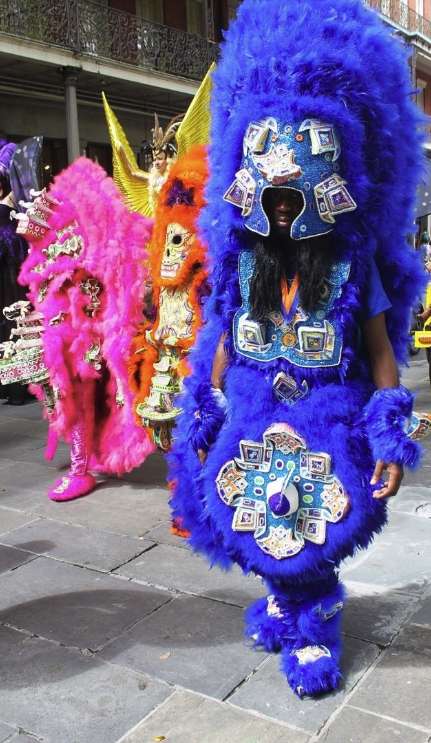The “Mardi Gras Indians” are named in honor of Native Americans (indigenous people) near New Orleans who helped black persons to escape slavery or join their communities as early as the 1700s. These carnival traditions are rooted in historic affinity and cultural blending of African American, Indigenous, and mixed-race people. Historically, masking and processionals by black persons were not allowed in the Euro-centric krewes and celebrations of New Orleans. Since late 1800s, black communities developed their own krewes named for imaginary Indian tribes and local parades in the streets of their wards as a separate way to celebrate. During Mardi Gras, different Mardi Gras Indian tribes will dress and march through the streets with their followers, music, drums, and chants. Identities of members, costume designs, and tribal leaders used to be secret and their rich oral tradition was kept within the tribe. In recent decades, when tribes cross paths with each other, their Big Chiefs will challenge each other to bow and pay respect. Ceremonial dances and chants are exchanged where the chiefs boast and insult each other. The challenge is a friendly but competitive way for the tribes to compare their art and craftsmanship and celebrate their traditions. Mardi Gras Indians are well known for their beautiful, hand-crafted regalia that incorporate historical and fantastical Native American motifs, including headdresses, elaborate beading, and beautiful designs. It can take up to a year and thousand of dollars for individual member to hand-create their gorgeous costumes (aka suits). The Mardi Gras Indians have become a prominent part of New Orleans culture, participating in parades, concerts, charity events, and other events throughout the year.
